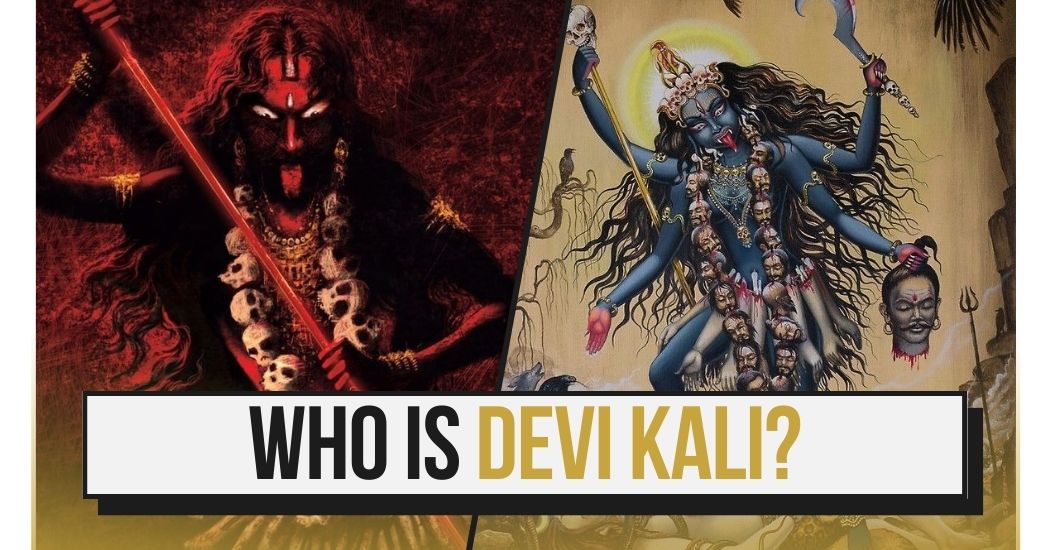Kali is the goddess of time, doomsday, and death in Hinduism. She is also known as the black goddess, the feminine form of the Sanskrit word kala, which means “time, doomsday, death,” or “black.” Kali’s roots can be found in the gods of the village, tribal, and mountain cultures of South Asia. Over time, the Sanskritic traditions gradually adopted and changed these gods, but they were never completely tamed. In Sanskrit culture, she makes her first big appearance in the Devi Mahatmya. Kali’s art, cult, and myths often connect her not only to death but also to sexuality, violence, and, strangely, in some later traditions, motherly love.
Even though Kali is shown in many different ways in South Asia (and now in much of the rest of the world), she is usually black or blue, partially or completely naked, with a long tongue that hangs out, multiple arms, a skirt or girdle made of human arms, a necklace made of decapitated heads, and a decapitated head in one of her hands. She is often shown standing or dancing on her husband, the god Shiva, who lies on his back underneath her. Many of these pictures show her sticking out her tongue, which is sometimes said to show how surprised and embarrassed she is to find that she is trampling on her husband. But the idea that Kali has a long tongue has been around for a long time. In ancient Sanskrit texts called the Brahmanas, the ogress Long Tongue, who licks up offerings, is a forerunner of Kali. The Devi Mahatmya says Kali came from the goddess Durga’s anger to kill the demon Raktabija (“Blood-Seed”). Each drop of Raktabija’s blood that hits the ground during the fight creates a new demon. Kali drinks the blood before it hits the ground to stop this from happening. She is also said to have been born when the goddess Parvati shed her dark skin. The sheath became Kali, also called Kaushika, which means “The Sheath,” and Parvati became Gauri.
Kali is worshipped all over India, especially in Kashmir, Kerala, South India, Bengal, and Assam. Since the end of the 20th century, feminist scholars and writers in the United States have seen Kali as a symbol of female empowerment. In contrast, members of New Age movements have found theological and sexual freedom in her more violent sexual manifestations.
Quick FAQ – Goddess Kali
Why Goddess Kali is black?
Kali’s dark appearance stands for the darkness that everything came from. She has a dark skin colour. Kali is worshipped as the one who keeps nature alive because she is also the goddess of Preservation. Kali is standing still on Shiva. The way she looks is a symbol of protecting mother nature.
Why does Goddess Kali stand on shiva?
The right foot of Kali is often shown on Shiva’s chest when standing. This is a scene from an episode where Kali was so out of control on the battlefield that she was about to destroy the whole universe. Shiva calmed them and made her feel better by lying down under her foot.
Why goddess kali’s tongue is out?
Here, Kali’s tongue is a weapon to be feared and a reminder that nature will eventually eat all life. In most stories, Kali sticks out her tongue because of something that happens at home. After killing the demon Daruka, Kali drank his blood. The blood made her want to kill.
Who is the husband of Devi Kali?
Devi Kali does not have an earthly husband. She is often referred to as being married to Lord Shiva, one of the Hindu pantheon’s most important gods. However, this relationship is more symbolic than literal; Shiva represents consciousness, while Devi Kali represents energy. Together they form a divine union that symbolizes the power of creation and destruction.

